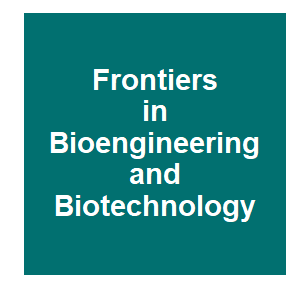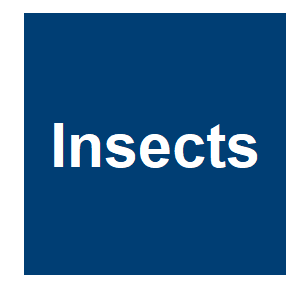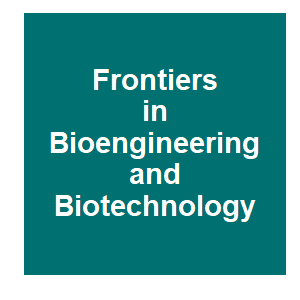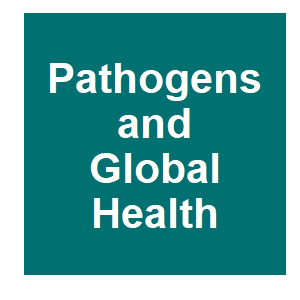
Keywords: community engagement

|
The boundary problem: Defining and delineating the community in field trials with gene drive organismsN. de Graeff, I. Pirson, R. van der Graaf, A. L. Bredenoord and K. R. Jongsma, Bioethics, 2023.
Despite widespread and worldwide efforts to eradicate vector-borne diseases such as malaria, these diseases continue to have an enormous negative impact on public health. For this reason, scientists are working on novel control strategies, such as gene drive technologies (GDTs). ... Keywords: community engagement, ethics, gene drive synthetic, indigenous people, islands, Oceana |

|
Operationalizing stakeholder engagement for gene drive research in malaria elimination in Africa-translating guidance into practiceL. Pare Toe, B. Dicko, R. Linga, N. Barry, M. Drabo, N. Sykes and D. Thizy, Malaria Journal, 21:225. 2022.
Gene drive mosquitoes are increasingly considered a potential transformational tool for vector control of malaria mosquitoes. As part of efforts to promote responsible research in this field, a number of guidance documents have been published by the World Health Organization, ... Keywords: community engagement, ethics, gene drive synthetic, indigenous people, islands, Oceana |

|
A multi-disciplinary approach for a building common understanding of genetic engineering for malaria control in Burkina FasoL. Pare Toe, N. Barry, A. D. Ky, S. Kekele, W. I. Meda, K. Bayala, et al., Humanities and Social Sciences Communications, 9. 2022.
Genetic engineering is a complex topic, even for scientists working in other areas, and even more so for those who lack a formal scientific training. To help gene specialists and affected communities talk with one another, international guidance documents have been published that ... Keywords: community engagement, ethics, gene drive synthetic, indigenous people, islands, Oceana |

|
UC Davis — Malaria Gene Drive Feasibility AnalysisGood Ventures, Good Ventures, 2022.
Open Philanthropy recommended a grant of $10,248,967 over three years to UC Davis to support subsequent stages of a feasibility analysis of a potential test of gene drives for malaria control on the adjoining West African islands of São Tomé and Príncipe. The work, led by Dr. ... Keywords: community engagement, ethics, gene drive synthetic, indigenous people, islands, Oceana |

|
California Residents’ Perceptions of Gene Drive Systems to Control Mosquito-Borne DiseaseC. E. Schairer, C. Triplett, O. S. Akbari and C. S. Bloss, Frontiers in Bioengineering and Biotechnology, 10. 2022.
Scientists developing gene drive mosquitoes for vector control must understand how residents of affected areas regard both the problem of mosquito-borne disease and the potential solutions offered by gene drive. This study represents an experiment in public engagement at an early ... Keywords: community engagement, ethics, gene drive synthetic, indigenous people, islands, Oceana |

|
Stakeholder Views on Engagement, Trust, Performance, and Risk Considerations About Use of Gene Drive Technology in Agricultural Pest ManagementC. L. Goldsmith, K. E. Kang, E. Heitman, Z. N. Adelman, L. W. Buchman, D. Kerns, X. Liu, R. F. Medina and A. Vedlitz, Health Security, 2021.
Gene drive is an experimental technique that may make it possible to alter the genetic traits of whole populations of a species through the genetic modification of a relatively small number of individuals. This technology is sufficiently new that literature on the understanding ... Keywords: community engagement, ethics, gene drive synthetic, indigenous people, islands, Oceana |

|
Ugandan stakeholder hopes and concerns about gene drive mosquitoes for malaria control: new directions for gene drive risk governanceS. Hartley, R. D. J. Smith, A. Kokotovich, C. Opesen, T. Habtewold, K. Ledingham, B. Raymond and C. B. Rwabukwali, Malaria Journal, 20:149. 2021.
The African Union’s High-Level Panel on Emerging Technologies identified gene drive mosquitoes as a priority technology for malaria elimination. The first field trials are expected in 5–10 years in Uganda, Mali or Burkina Faso. In preparation, regional and international ... Keywords: community engagement, ethics, gene drive synthetic, indigenous people, islands, Oceana |

|
Knowledge, Attitude, and Practices Survey in Greece before the Implementation of Sterile Insect Technique against Aedes albopictusA. Stefopoulou, S. L. LaDeau, N. Syrigou, G. Balatsos, V. Karras, I. Lytra, E. Boukouvala, D. P. Papachristos, P. G. Milonas, A. Kapranas, P. Vahamidis and A. Michaelakis, Insects, 12. 2021.
A KAP tool was used to shed light on the knowledge, practices, and attitudes of local community members in order to better prepare and motivate participation in household mosquito control and to assess current understanding of SIT. Each household also received specific ... Keywords: community engagement, ethics, gene drive synthetic, indigenous people, islands, Oceana |

|
The Promises and Realities of Integration in Synthetic Biology: A View From Social ScienceL. Carter and A. Mankad, Frontiers in Bioengineering and Biotechnology, 8. 2021.
We take stock of thepromises and realities of science integration by sharing our experiences of embarking onthis very challenge in Australia. We conclude by offering suggestions for bringing aboutthe enabling conditions for improved integration across the natural and social ... Keywords: community engagement, ethics, gene drive synthetic, indigenous people, islands, Oceana |

|
Islands as Laboratories: Indigenous Knowledge and Gene Drives in the PacificR. I. Taitingfong, Human Biology, 91:179-188. 2020.
This article argues that the genetic engineering technology known as gene drive must be evaluated in the context of the historic and ongoing impacts of settler colonialism and military experimentation on indigenous lands and peoples. After defining gene drive and previewing some ... Keywords: community engagement, ethics, gene drive synthetic, indigenous people, islands, Oceana |

|
Community Engagement Prior to a Small-Scale Pilot of the Sterile Insect Technique in Kwazulu-Natal, South Africa 2018P. N. Manana, J. Zikhali, D. Dlamini, S. Gumede, N. Mabaso, T. Mpungose and G. Munhenga, Journal of Public Health and Disease Prevention, 2. 2019.
Approximately 165 000 listeners were engaged during two 30 minute radio interviews at a local radio station. Two hundred and fifty farm workers, several outpatients from primary health care facilities and 1400 secondary school pupils were given education on malaria transmission ... Keywords: community engagement, ethics, gene drive synthetic, indigenous people, islands, Oceana |

|
Two unresolved issues in community engagement for field trials of genetically modified mosquitoesD. B. Resnik, Pathogens and Global Health, 113:238-245. 2019.
There is an emerging consensus among scientists, ethicists, and public health officials that substantive and effective engagement with communities and the wider public is required prior to releasing genetically modified mosquitoes into the environment. Keywords: community engagement, ethics, gene drive synthetic, indigenous people, islands, Oceana |

Contact
David O’Brochta
Foundation for the
National Institutes of Health
geneconvenevi@fnih.org
RSS

